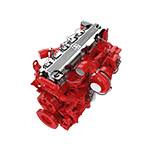Dec . 03, 2024 13:54 Back to list
what does a brake drum do
What Does a Brake Drum Do?
When it comes to the functioning of a vehicle's braking system, understanding the components involved is crucial for both safety and performance. One of the key elements in this system is the brake drum. Though often overlooked, the brake drum plays a pivotal role in ensuring that vehicles stop efficiently and safely. In this article, we will explore what a brake drum does, how it works, and the importance of maintaining this component.
The Role of Brake Drums
Brake drums are a type of braking mechanism commonly found in older vehicles and some modern cars, especially those with rear-wheel drive. They are part of a drum brake system, which consists of several components the brake drum itself, brake shoes, wheel cylinders, and various springs and hardware necessary for operation. The primary role of the brake drum is to house the brake shoes and provide a surface for them to press against in order to create friction that slows down or stops the vehicle.
How Brake Drums Work
When a driver presses the brake pedal, hydraulic fluid is transferred from the master cylinder to the brake system, activating the wheel cylinder. This cylinder pushes the brake shoes outward against the inner surface of the brake drum. As the shoes make contact with the drum, friction is generated. This friction slows down the wheel's rotation, ultimately bringing the vehicle to a stop.
Drum brakes operate based on a friction principle. The harder the driver presses the brake pedal, the more force is applied to the shoes, increasing the pressure against the brake drum. This system is effective in generating the necessary stopping power, especially for heavy vehicles like trucks and SUVs.
Advantages of Brake Drums
what does a brake drum do

One of the primary advantages of brake drums is their ability to handle heat. When brakes are applied, they generate substantial heat due to friction. Brake drums are typically made from cast iron or aluminum, materials that can withstand high temperatures without deforming. This quality allows drum brakes to maintain performance even under heavy loads.
Moreover, brake drums are less prone to corrosion compared to disc brakes because they are enclosed. This design protects them from dirt and moisture, which can lead to faster wear of braking components. As a result, they tend to have a longer service life when properly maintained.
Maintenance and Inspection
Like all vehicle components, brake drums require regular inspection and maintenance. Over time, the continuous friction can cause wear and tear on both the drums and the brake shoes. If the braking performance seems inadequate, or if there are unusual noises when braking, it’s essential to have the system checked by a qualified professional.
Common signs of brake drum wear include a pulsating sensation when braking, a grinding noise, or reduced braking efficiency. If any of these symptoms are detected, it is crucial to address them promptly to avoid more severe damage or a potential safety hazard.
Conclusion
In conclusion, the brake drum is a crucial part of a vehicle's braking system, especially in drum brake configurations. Its main function is to create the necessary friction to slow down or stop the vehicle by working in conjunction with brake shoes. Understanding how brake drums operate, their advantages, and the importance of maintenance can help vehicle owners ensure that their brakes function effectively.
As technology advances, more vehicles are being equipped with disc brakes, which offer certain advantages such as weight reduction and improved heat dissipation. However, brake drums still play an important role in many vehicles today, particularly in heavy-duty applications. Proper maintenance and timely inspections are key to ensuring that this vital component continues to function correctly, providing the safety and reliability that drivers expect from their vehicles.
-
Explore Japan: Ultimate Travel Guide & Authentic Experiences
NewsAug.19,2025
-
Your Brake Drum Man: Premium & Reliable Brake Drums for Sale
NewsAug.18,2025
-
ROR Web Development: Build Fast, Scalable, Secure Apps
NewsAug.17,2025
-
Scania Brake Drums: OEM Quality for Optimal Safety & Durability
NewsAug.16,2025
-
R.V.I: Advanced Remote Visual Inspection for Precision
NewsAug.15,2025
-
Discover HYUNDA: Innovative Vehicles, Equipment & Solutions
NewsAug.14,2025
